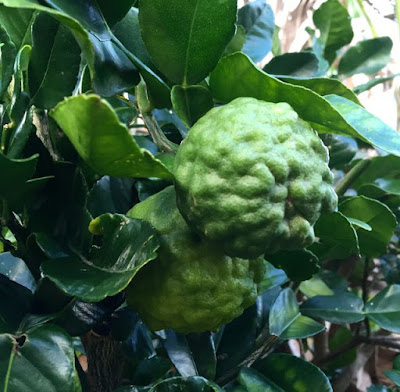300g unsalted butter
400g soft brown sugar
1.5 kg dried fruit - currants, raisins, sultanas, dates, prunes, sun-dried apricots.
NOTE: Make sure that 1 1/4 cups of the mixed fruit are raisins. Also, the better the quality - the better the cake, so I use preservative free organic fruit - believe me, it makes a difference.
2 tsp bicarbonate soda
1/2 cup brandy (or dark rum/port/muscat)
NOTE: Don't be afraid that adding alcohol to this cake will make it unsuitable for children - it evaporates in the cooking process. It is just there to add flavour and preserve the cake.
1 1/2 cups water
2 tsp freshly grated nutmeg
2tsp ground cinnamon
4 eggs, lightly beaten
2 1/2 cups plain wholemeal flour
200g whole peeled almonds and pecans for decorating
Good pinch salt
This recipe will make one large cake or two cakes of this size.
1. Melt the butter over a medium heat in a saucepan large enough to hold all the ingredients.2. Add the sugar until it dissolves and becomes slushy.
3. Tip in all the dried fruit, bicarbonate of soda, brandy and water.
4. Increase the heat to high and stir until all the sugar is dissolved and simmer for 4 minutes. BEWARE - the bicarb makes it froth up.
5. Cover and leave overnight or for at least six hours. You want all the fruit to plump up and be really juicy - this makes the cake deliciously moist.
6. Preheat oven to 150oC.
7. Butter and line your cake tins. If making just one large one, you need a 25 cm round tin. The round one above is 23cm and the loaf tin 20cm.
8. Add the nutmeg, cinnamon and beaten eggs to the fruit and stir well.
9. Add the flour and stir well, leaving it to sit for a few minutes before you scrape into the prepared cake tins. (This is where the grandchildren come in for wish-making and spoon licking!).
10. Tap the full tins lightly on the bench to help raise any large air bubbles and level out the mix.
11. Decorate with almonds/pecans and bake for approx. 2 hours until skewer comes out clean. This will depend on the size of the tins you have used. They may take a little more or a little less time.
12. Leave the cake to cool completely in its tin, on a wire rack, before you take it out.
13. Will keep in a sealed container in the fridge for a couple of months.
A small helper with a big spoon to lick - I think her wish came true too!
I hope you enjoy this cake as much as Nick and his crew seem to be!





















